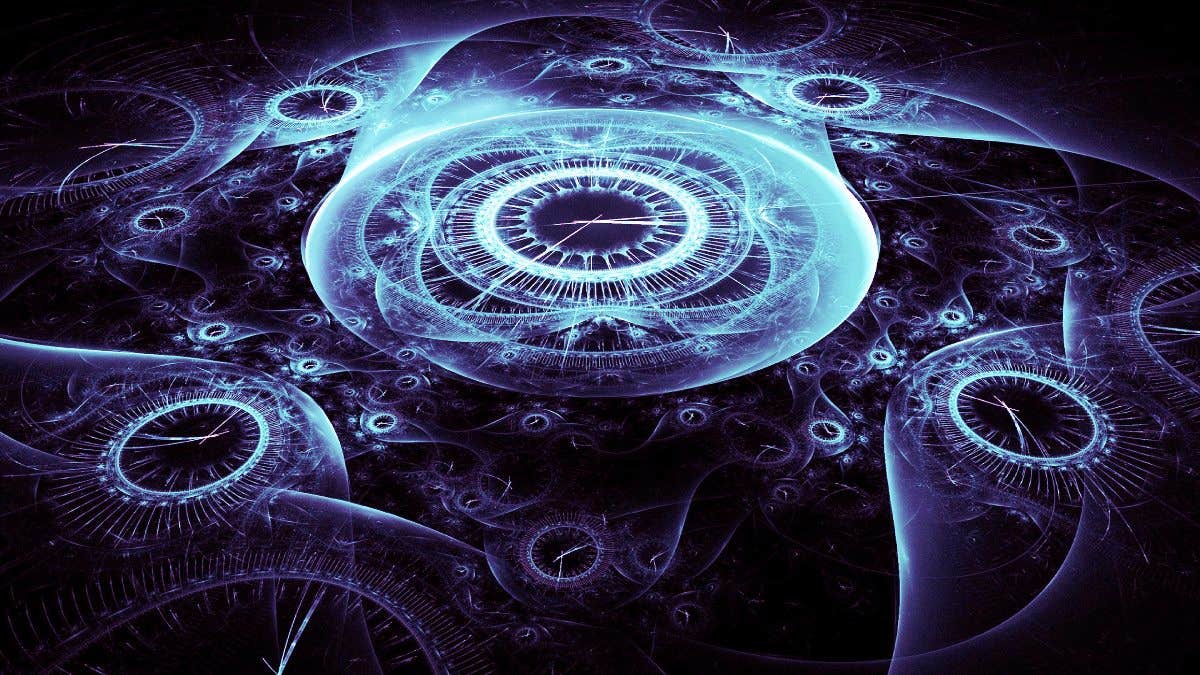The universe might actually contain 3 time dimensions and only 1 space dimension
Extending relativity to superluminal observers redefines causality, integrates quantum mechanics, and unveils a new understanding of physics.

Physicists extend relativity to superluminal observers, reshaping causality and integrating quantum mechanics for a groundbreaking view of the universe. (CREDIT: CC BY-SA 4.0)
In a groundbreaking exploration of physics, researchers have revealed a way to extend Albert Einstein's special theory of relativity to accommodate superluminal observers—those moving faster than light. This extension challenges conventional notions of causality and offers a glimpse into a radically different universe.
Einstein's special relativity, established in 1905, unified space and time into a four-dimensional continuum. It relies on two core principles: Galileo's relativity and the constancy of light's speed.
Physicist Andrzej Dragan highlights the critical role of Galileo's principle, which asserts that the laws of physics apply universally to all inertial observers. Traditionally, this has been limited to subluminal (slower-than-light) observers. But recent studies suggest no inherent reason why superluminal observers should be excluded.
These observers experience a vastly different reality. From their perspective, phenomena like particles traveling along multiple trajectories simultaneously become commonplace.
As co-author Prof. Krzysztof Turzyński explains, for a superluminal observer, the classical Newtonian concept of a point-like particle loses meaning. Instead, the physical world must be described through fields, following the principles of quantum mechanics and superposition.
Revisiting Causality and Quantum Mechanics
Superluminal motion has long raised questions about causality, sparking debates since the early 20th century. Conventional wisdom suggested that faster-than-light travel would result in paradoxes.
However, Dragan and Prof. Artur Ekert, in their seminal work, "Quantum Principle of Relativity," published in the New Journal of Physics, showed that causality could be preserved, albeit redefined.
Their recent research in a four-dimensional spacetime builds on this foundation, illustrating that extended relativity aligns with quantum mechanics. The research paper, "Relativity of superluminal observers in 1 + 3 spacetime", was published in the journal Classical and Quantum Gravity.
Related Stories
In the proposed framework, three dimensions act as time dimensions, while one remains spatial. This shifts the very essence of velocity and kinematics. The researchers prove that Einstein’s postulate of light’s constant speed still holds true for superluminal observers.
As Dragan notes, this approach integrates the quantum principle of superposition, where particles move along multiple paths simultaneously, transforming our understanding of determinism.
Implications for Physics and the Higgs Mechanism
Beyond theoretical musings, this work has profound implications for understanding the universe. The researchers argue that superluminal phenomena may play a crucial role in the Higgs mechanism, which explains how particles acquire mass.
Dragan suggests that a tachyonic field—associated with superluminal particles—is central to spontaneous symmetry breaking, a cornerstone of the Standard Model of particle physics.
This insight opens new avenues for exploring the early universe and the fundamental nature of matter. The research hints at the existence of particles that appear normal to superluminal observers but exotic to us. While experimental confirmation remains elusive, the theoretical groundwork provides a robust framework for future discoveries.
The inclusion of superluminal observers extends the postulates of quantum theory and relativity into uncharted territory. By bridging these pillars of modern physics, the research challenges the notion that quantum mechanics’ principles are fundamental and indivisible. Instead, it posits that quantum behavior naturally emerges from extended relativity in a four-dimensional spacetime.
As Turzyński puts it, this integration transforms the deterministic classical world into one governed by indeterminacy and quantum fields. The field-theoretic framework becomes the only viable description of a universe that includes superluminal observers. This perspective reshapes our understanding of symmetry, motion, and the fabric of reality itself.
The Faculty of Physics at the University of Warsaw, where much of this work originates, has a storied history of contributing to groundbreaking research. With over 200 academic staff and a diverse community of students, it remains a hub for innovation, blending quantum insights with cosmological exploration.
While the existence of superluminal particles remains speculative, their inclusion in theoretical frameworks offers profound insights into the universe's workings. The work of Dragan, Ekert, and their collaborators not only redefines the boundaries of relativity but also paves the way for integrating quantum mechanics with spacetime dynamics.
This synthesis promises to deepen our understanding of phenomena ranging from the Higgs mechanism to the early universe, potentially revolutionizing physics as we know it.
Note: Materials provided above by The Brighter Side of News. Content may be edited for style and length.
Like these kind of feel good stories? Get The Brighter Side of News' newsletter.
Joseph Shavit
Head Science News Writer | Communicating Innovation & Discovery
Based in Los Angeles, Joseph Shavit is an accomplished science journalist, head science news writer and co-founder at The Brighter Side of News, where he translates cutting-edge discoveries into compelling stories for a broad audience. With a strong background spanning science, business, product management, media leadership, and entrepreneurship, Joseph brings a unique perspective to science communication. His expertise allows him to uncover the intersection of technological advancements and market potential, shedding light on how groundbreaking research evolves into transformative products and industries.



